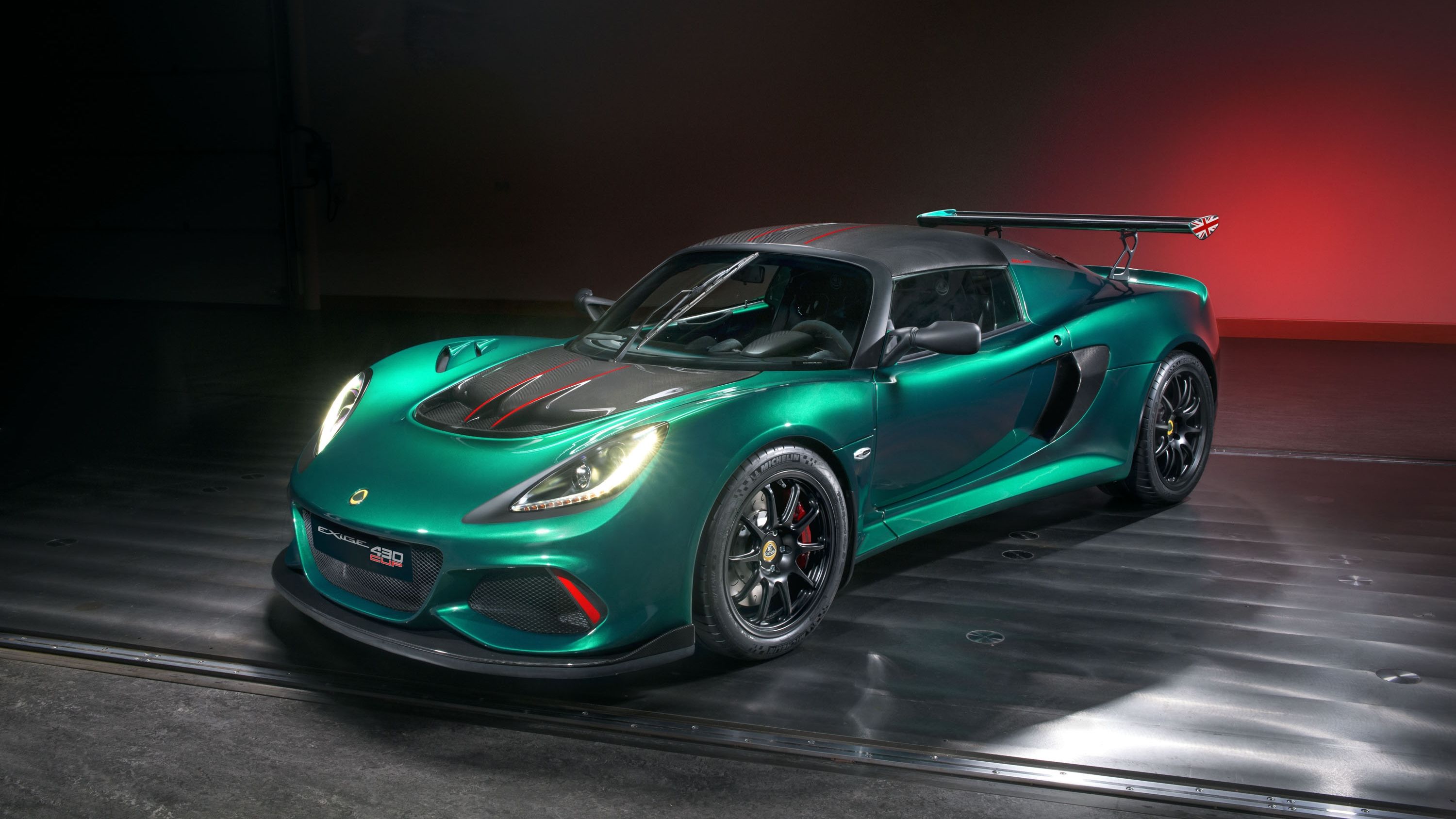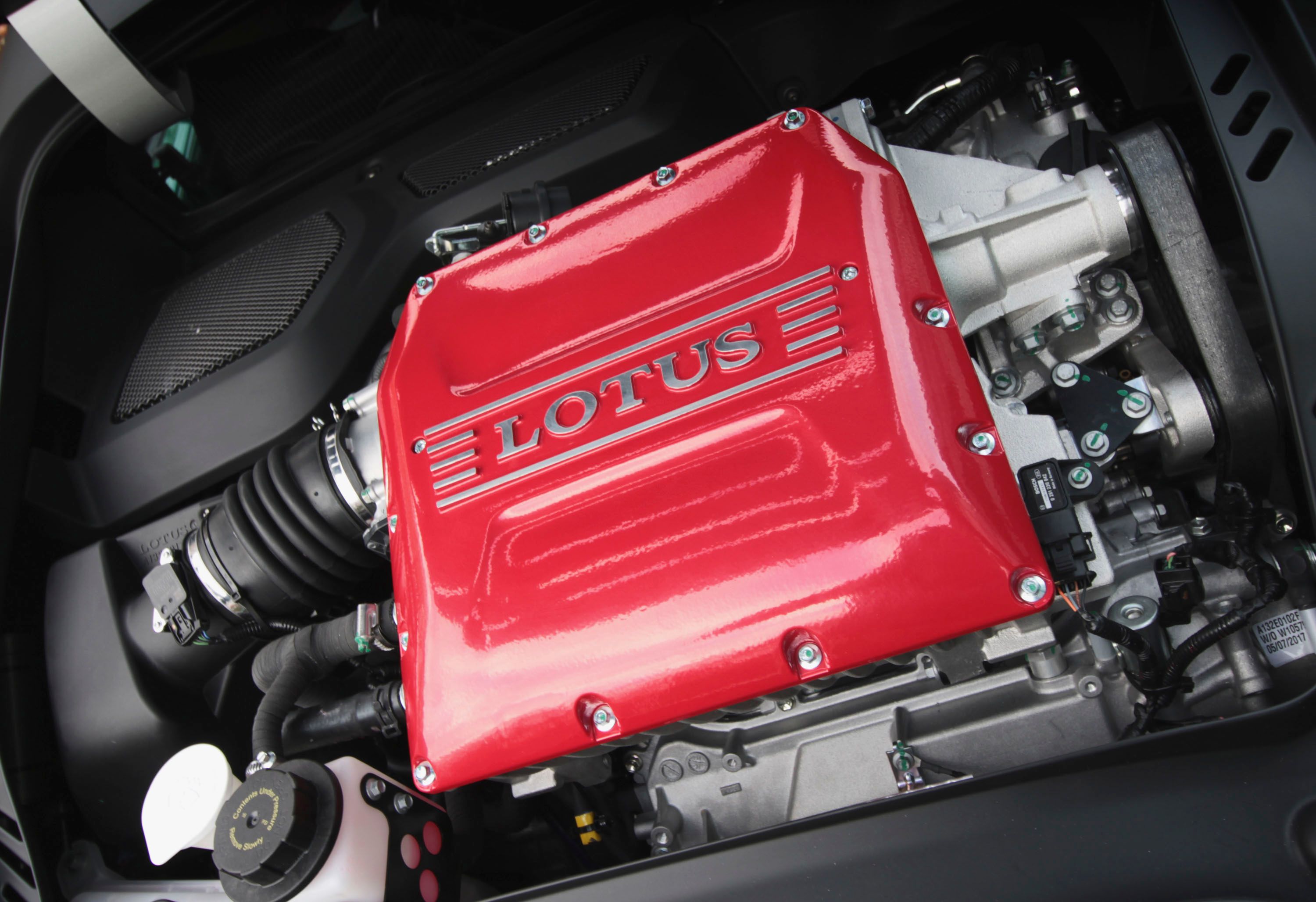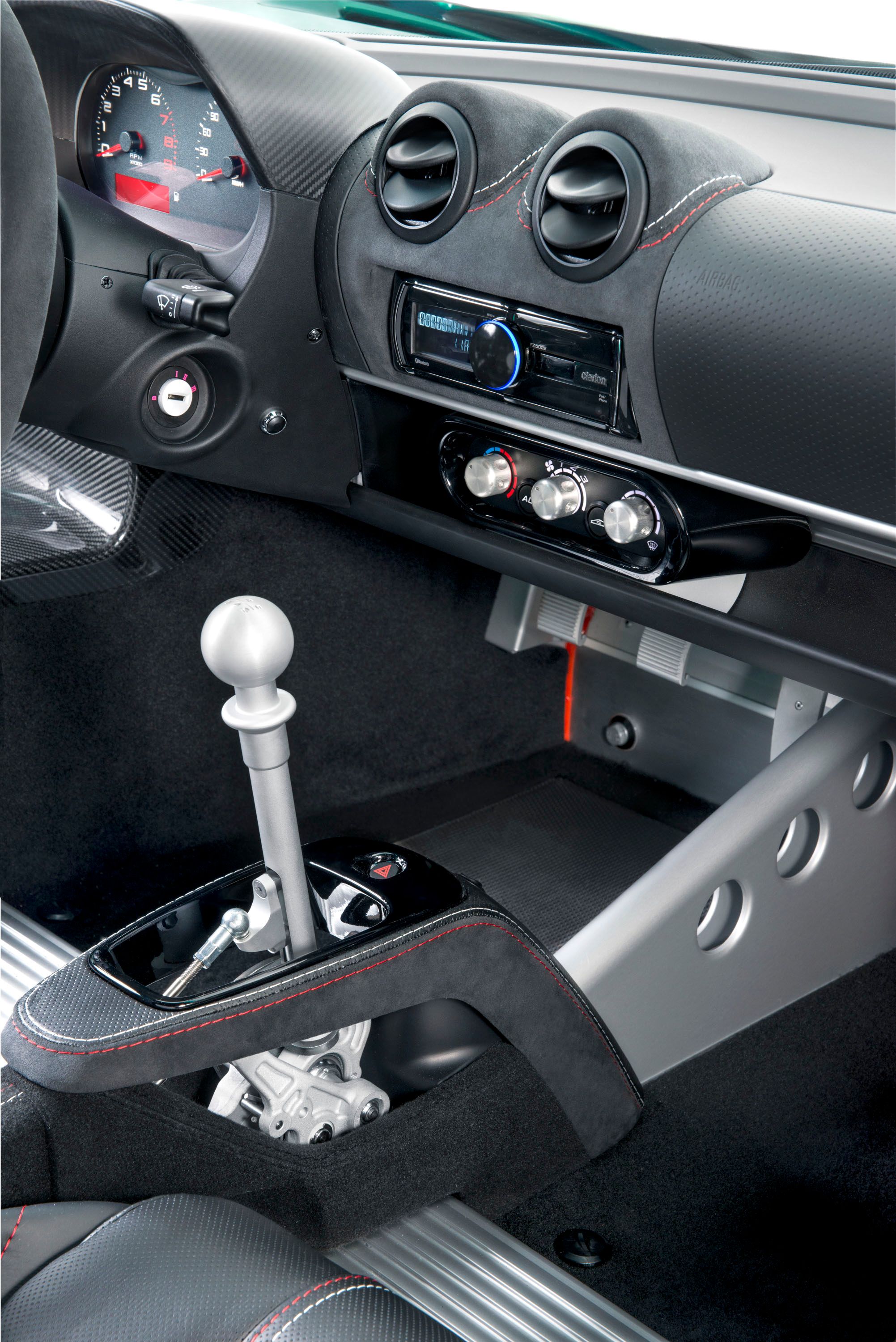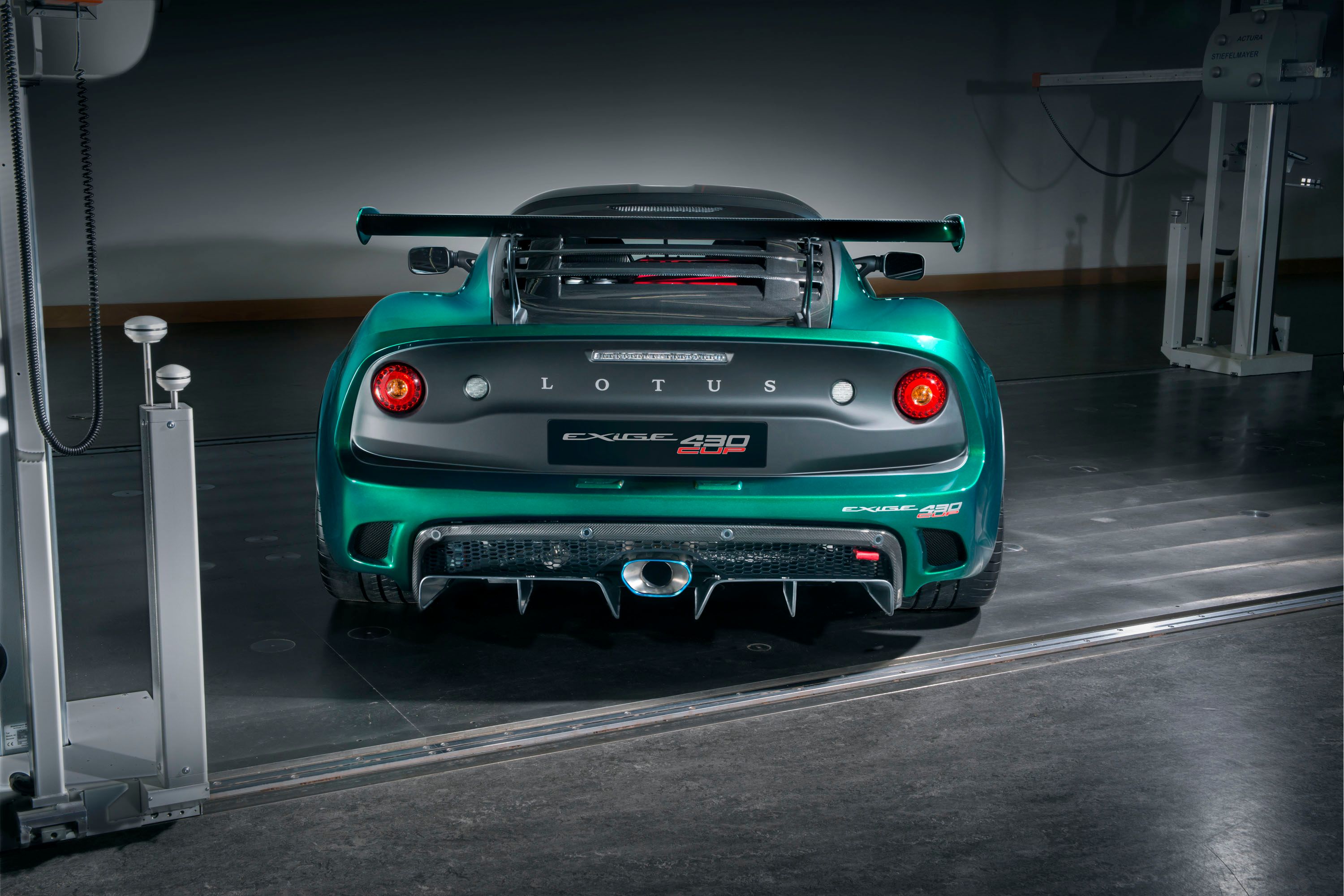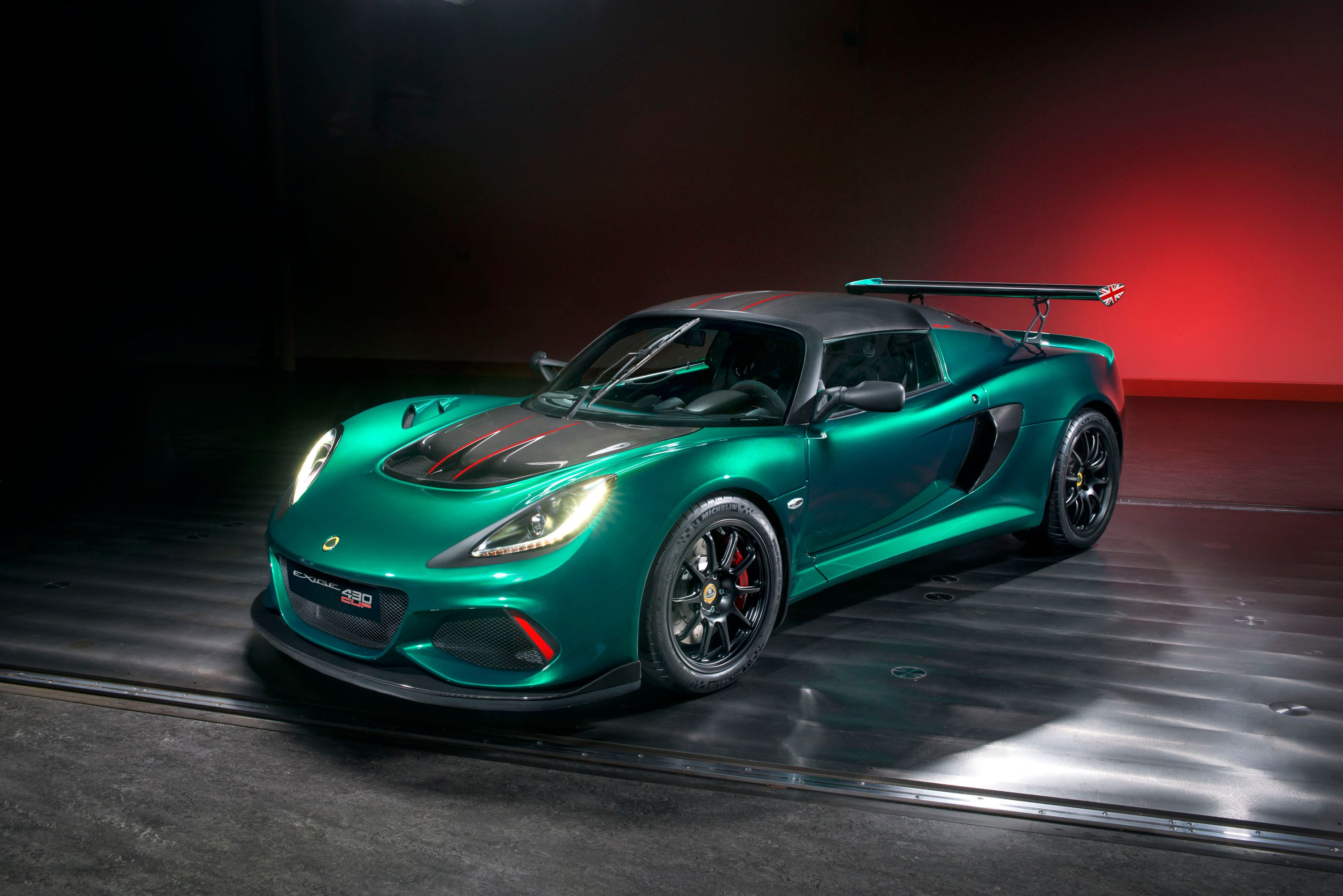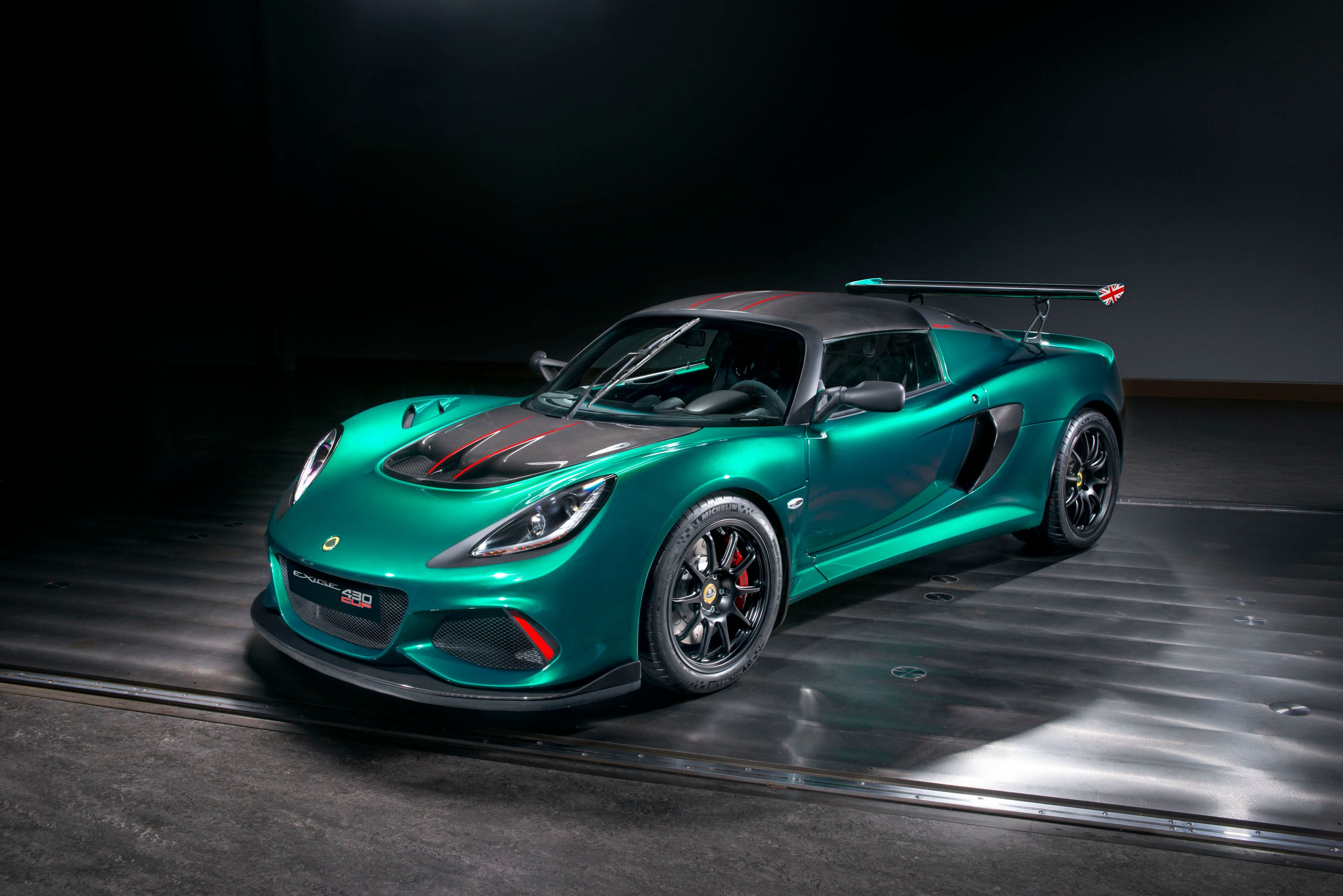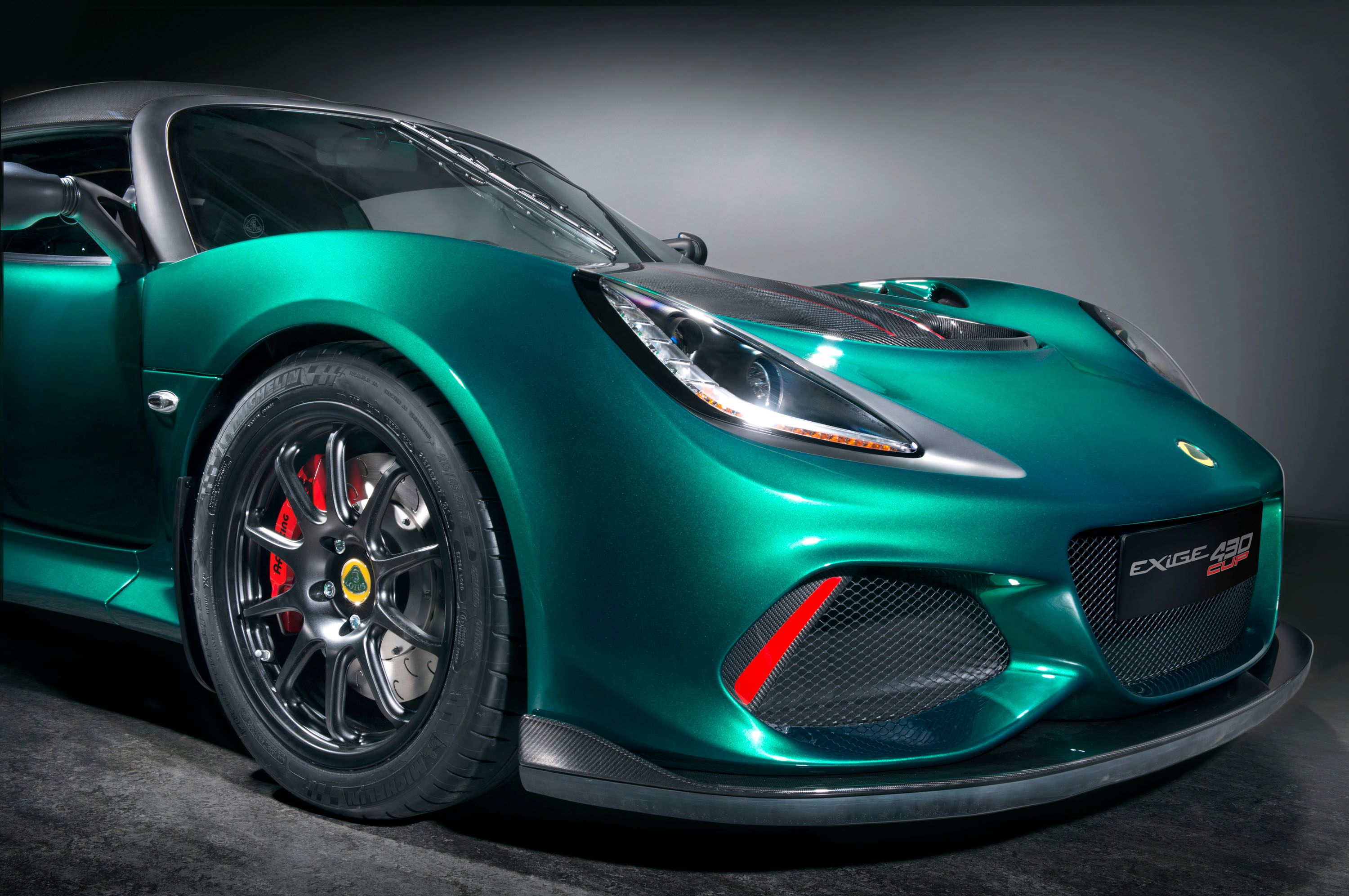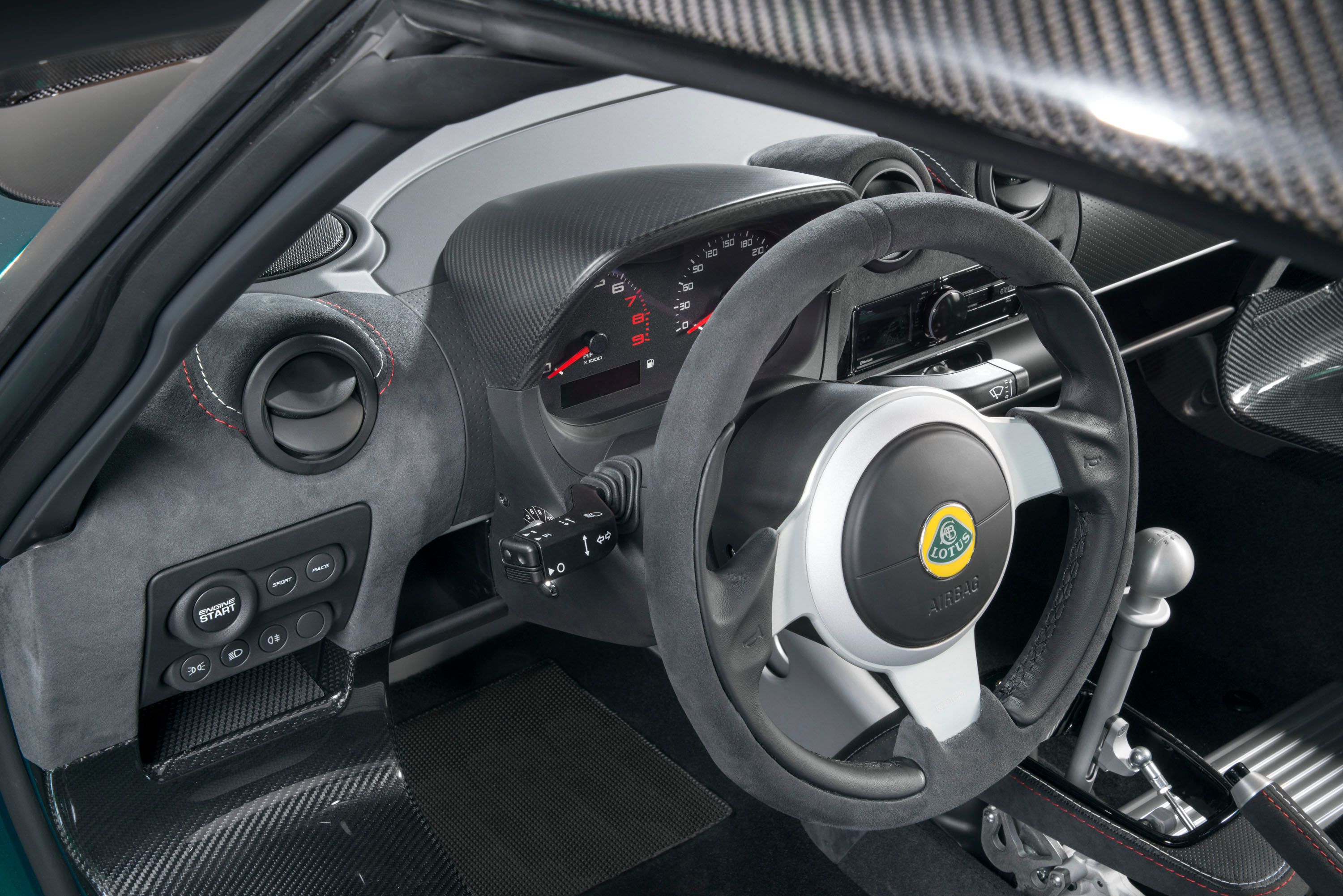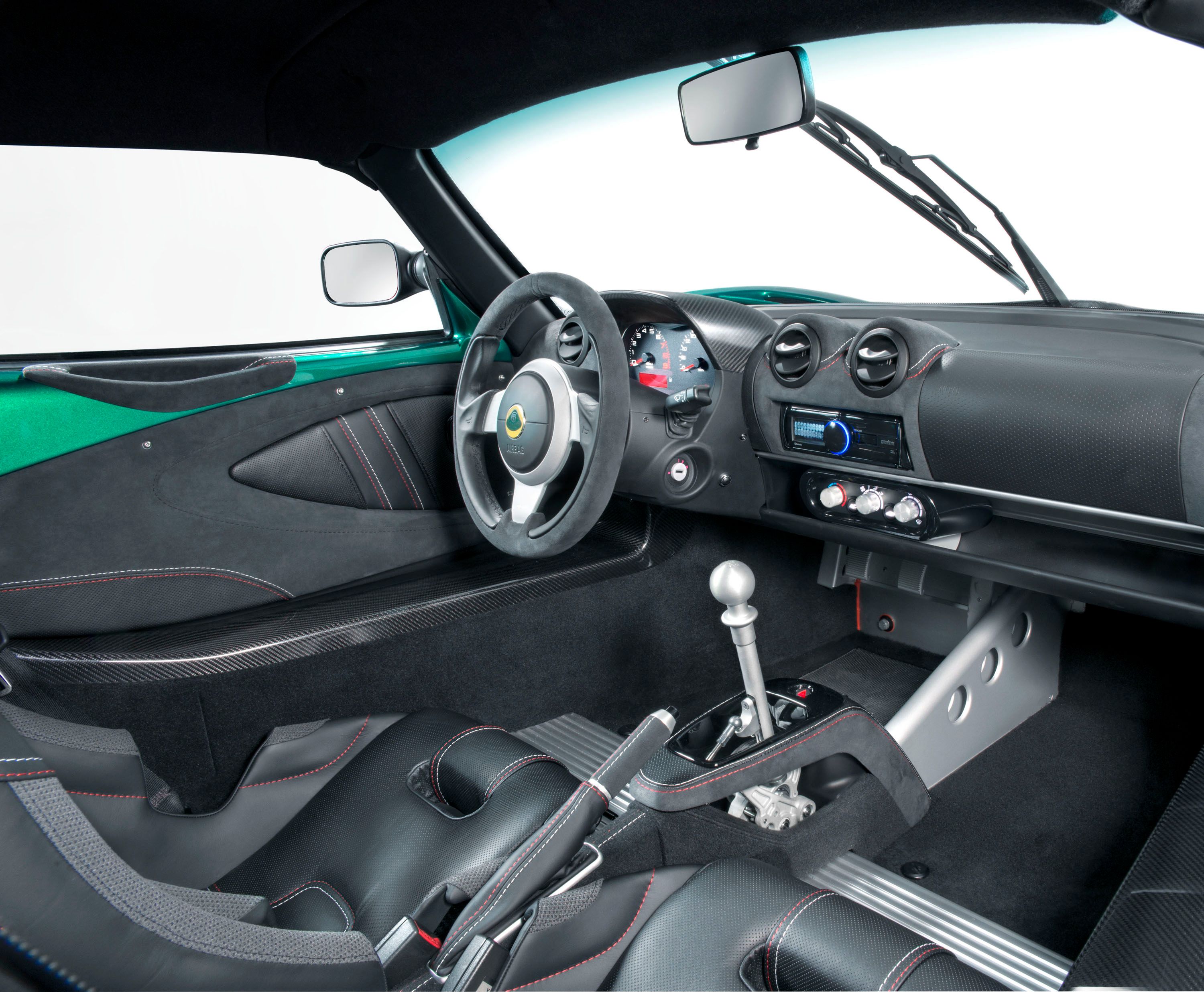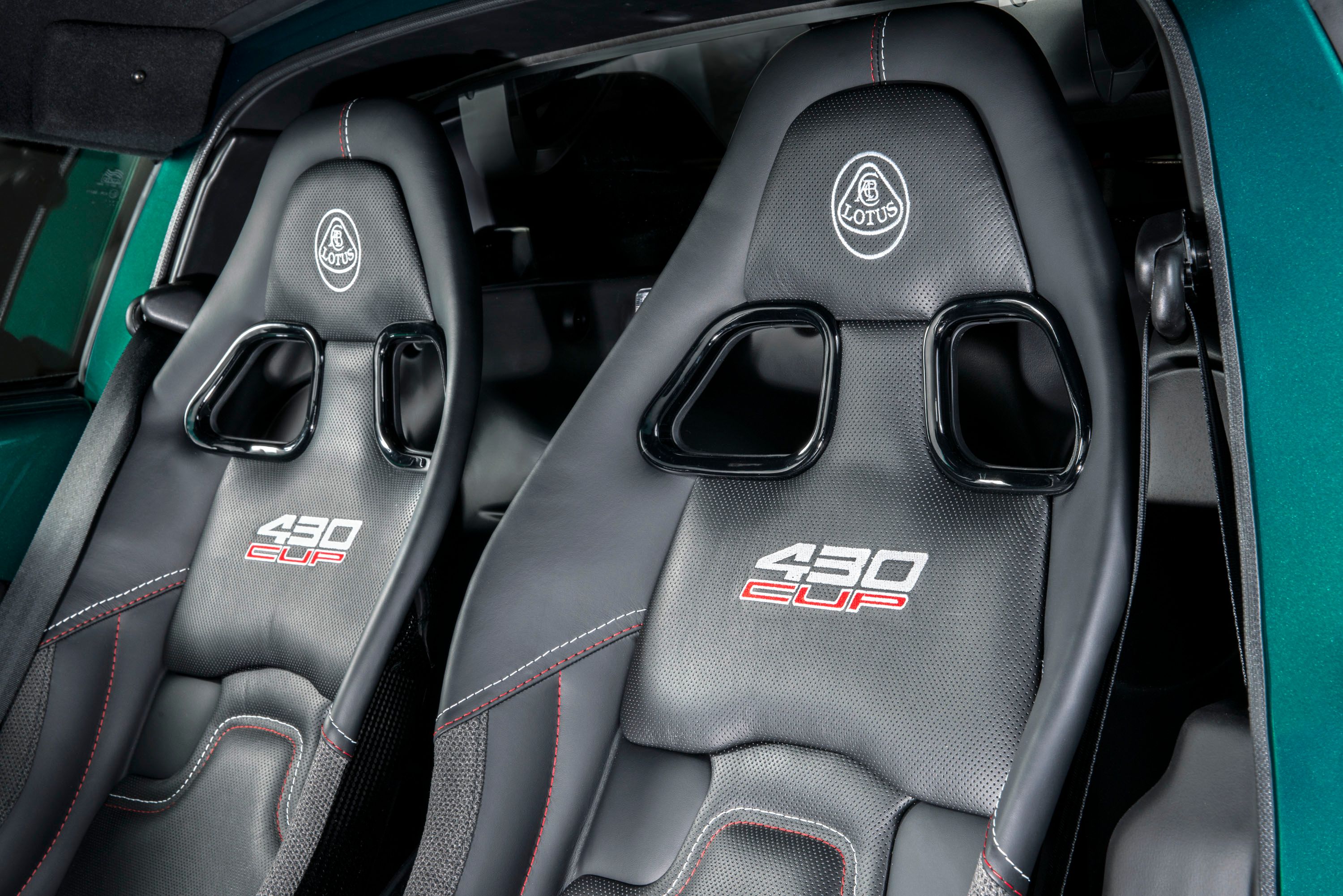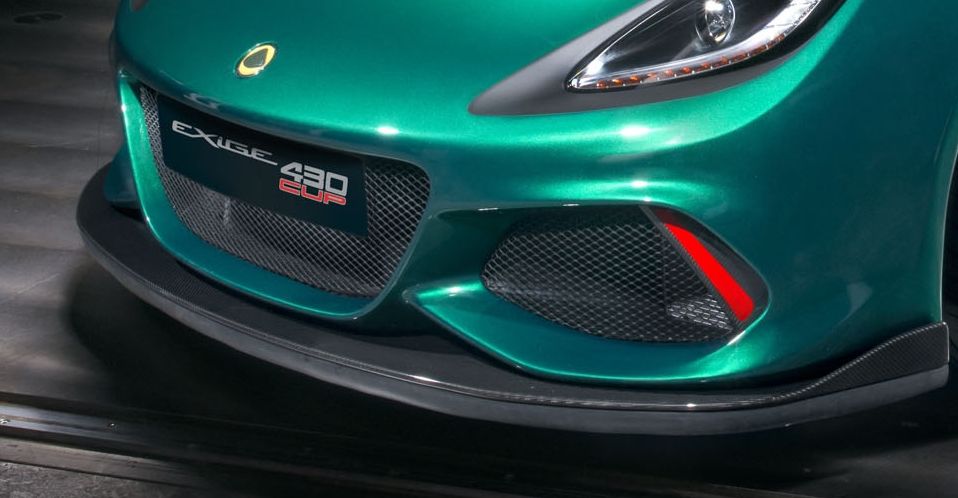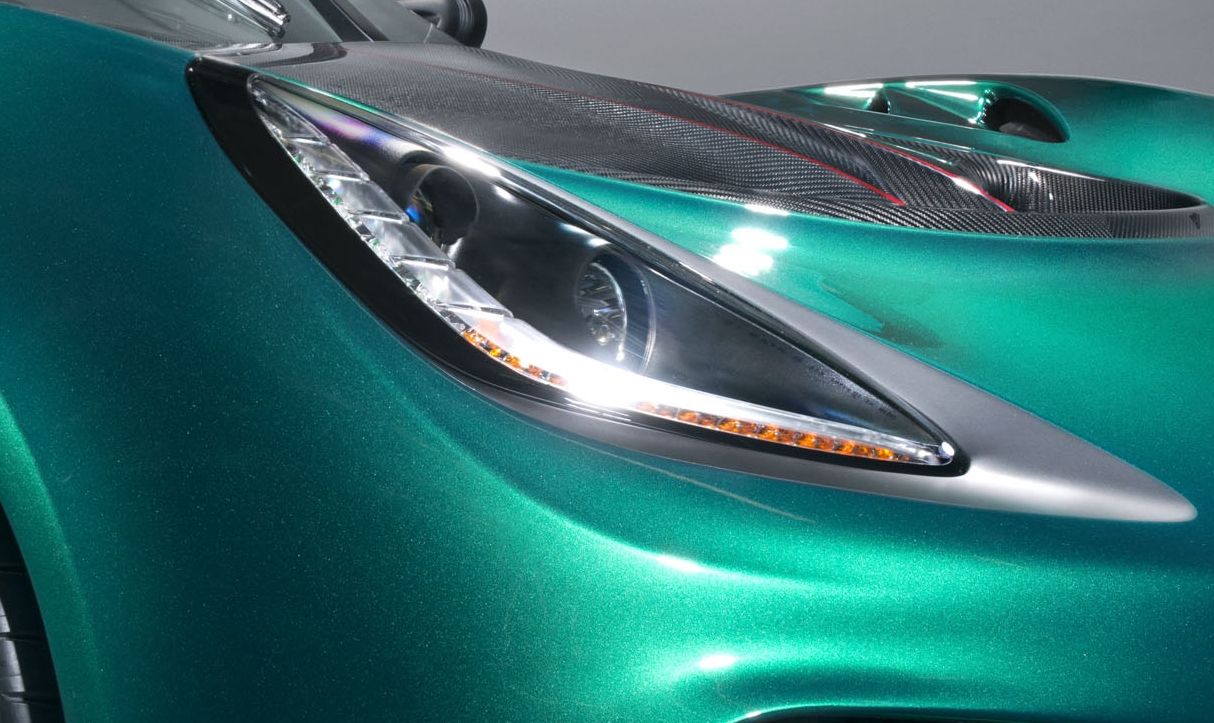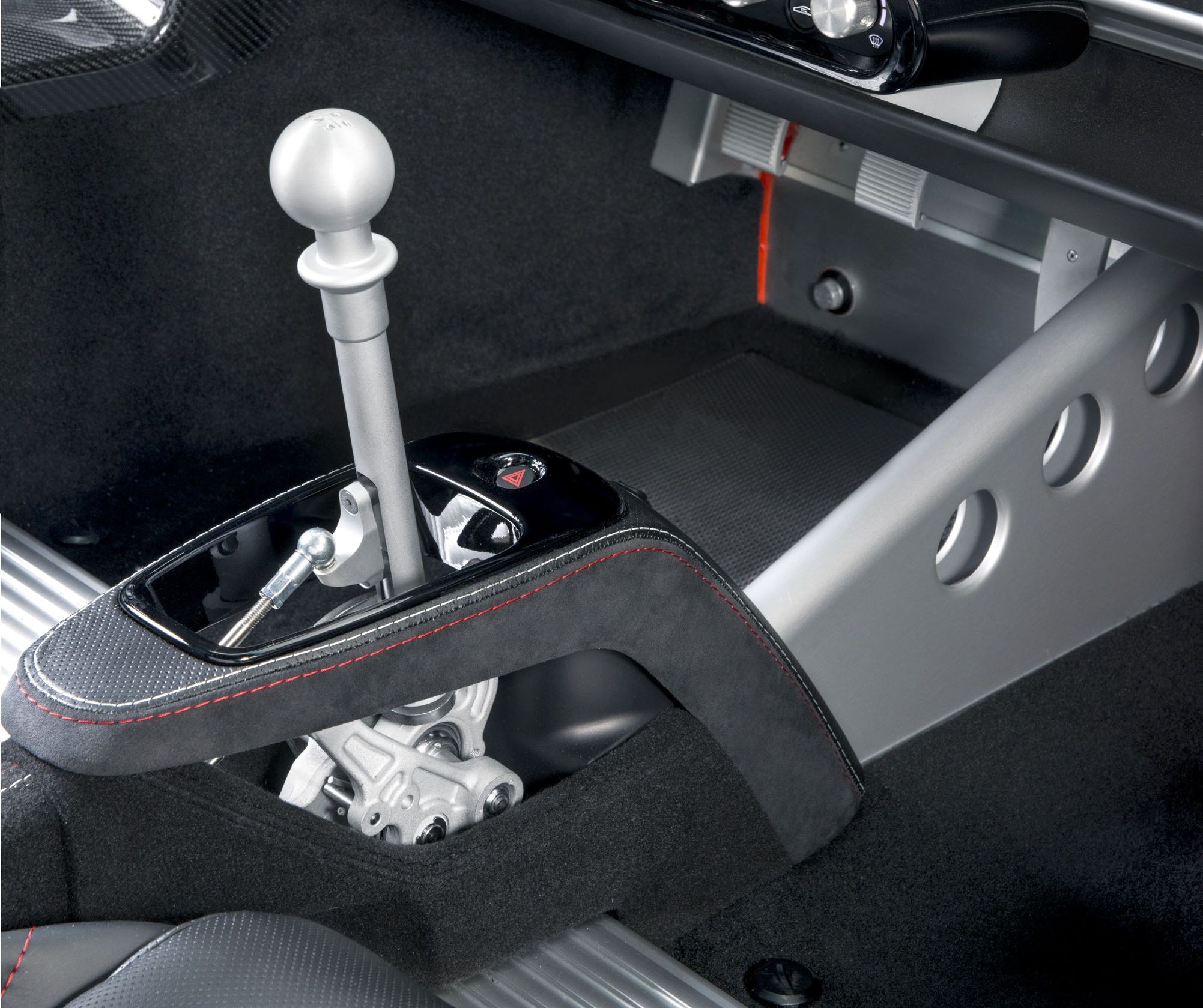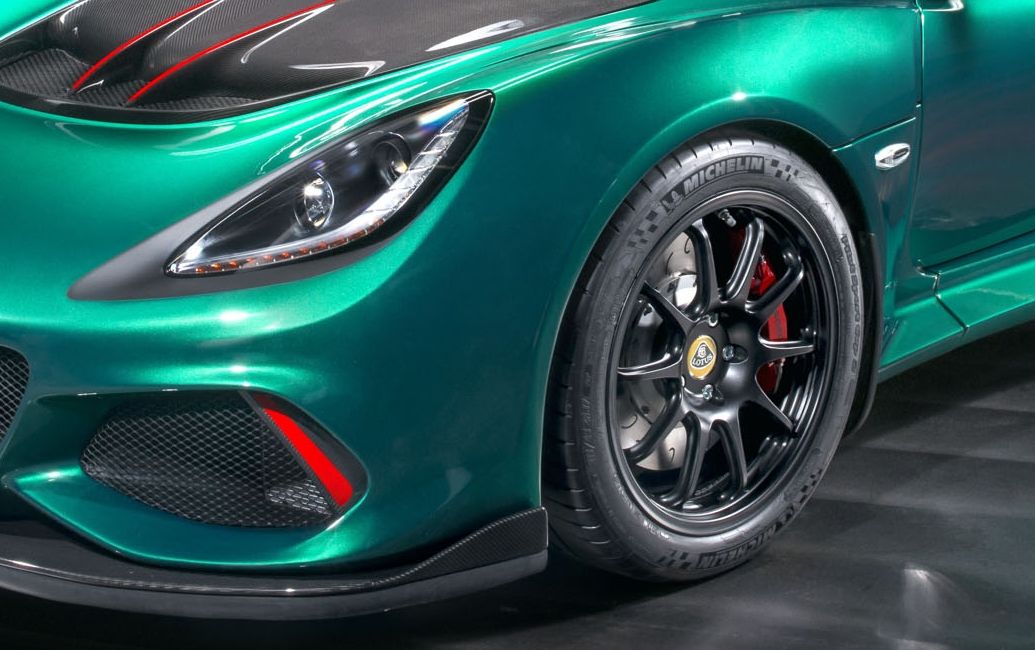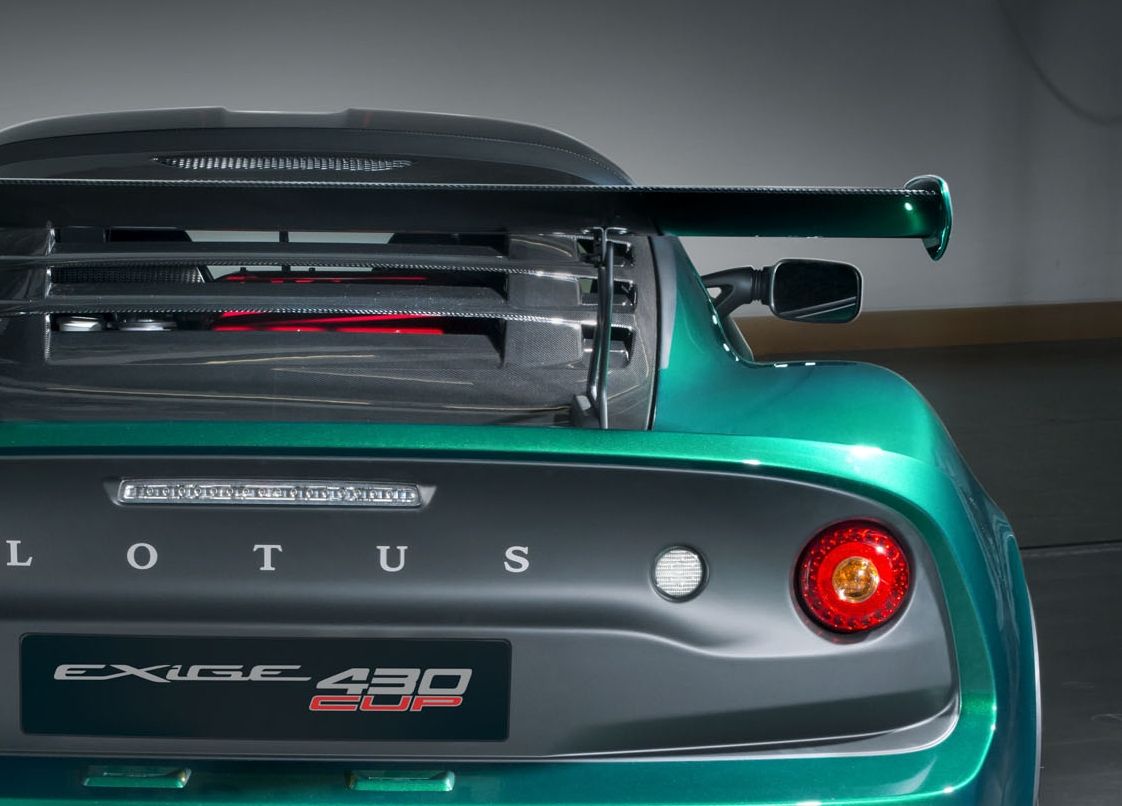First introduced in 2000, the Lotus Exige is now well into its third generation, but so far, it stays true to its roots. Offered as a hardtop iteration of the Lotus Elise roadster, the Exige is a two-seater performance coupe that seeks a pure driving experience through low weight and incomparable simplicity. It’s a tempting formula, and as such, Lotus has offered a variety of variants over the years, each upping the ante even higher than the last. The latest Cup 430 is no different. In case you were unaware, “Cup” translates as motorsport-focused in Lotus lingo, which means this machine is even more capable when it comes to dropping the lap times. It’s still street legal, but the barebones approach is stripped down even further with less weight. However, the big story here is the extra power and added aero, all of which combine to make for the fastest road-going Exige ever made.
How fast, exactly? Well, to add science to the conversation, Lotus says the Exige Cup 430 undercuts the Lotus 3-Eleven’s time at its Hethel test circuit by 1.2 seconds, stopping the timer at 1 minute, 24.8 seconds. That makes it the fastest production car to ever lap the track. Impressed? Read on for details.
Continue reading to learn more about the Lotus Exige Cup 430.
2017 Lotus Exige Cup 430
- Make: Array
- Model: 2017 Lotus Exige Cup 430
- Engine/Motor: V6
- Horsepower: 430
- Torque: 325 @ 4000
- Transmission: six-speed manual
- [do not use] Vehicle Model: Array
Exterior
The first thing you’ll notice about the Lotus Exige Cup 430 is its updated exterior. While only slightly changed next to the previous Exige Sport 380, the revisions make for a more effective aerodynamics package. Indeed, function trumps form with this one, even though we think the Cup 430 is a damn good lookin’ piece of kit.
Kicking things are redesigned mesh inserts for the front intakes. Mated with a new front splitter and air curtain, these components help to reduce drag without affecting downforce levels. There’s also a new splitter and trailing lip to properly direct the air flowing underneath the car, while reshaped air curtains guide the atmosphere through the front wheel arches to reduce turbulence and drag. Louvers were added behind the headlights to reduce the wheel well pressure and increase overall downforce.
In the flanks, you’ll find unique carbon fiber intakes with a wider mouth to help keep the radiators nice and chilly. In back is a behemoth motorsport-inspired wing to keep the tail planted. Made from carbon fiber and sporting taller dimensions, this unit once again manages to increase downforce without affecting drag. Cut-out sections behind the rear wheels also reduce pressure.
All said and done; Lotus boasts that the Exige Cup 430 produces upwards of 220 kg (485 pounds) of downforce at speed. It’ll also make the same amount of downforce at 100 mph as the Exige Sport 350 does at its top speed of 170 mph.
New lightweight clamshells were also added front and back, with a hybrid carbon composite material used for the various body panels. The multi-spoke, lightweight, forged alloy wheels are staggered in diameter, with 17’s in front and 18’s in back. Wheel finish includes the option for black, red, or silver as standard.
Interior
In true Lotus fashion, the cabin in the Exige Cup 430 comes with just enough gear to keep you relatively comfortable, while cutting out just about everything else in the name of speed. The dash layout is as simple as they come, with an uncluttered layout punctuated by round air vents. The center console is composed of a head unit that looks like an aftermarket upgrade out of a ‘90s-era Civic, below which is a trio of rotary knobs. Hell, there’s even a key slot next to the steering wheel. You know, to start the engine and stuff. Very old school.
Of course, this thing isn’t a total bunker. You still get color-keyed inserts for the seats, transmission tunnel, HVAC surround, and window switches as standard, while contrast stitching was added to the Alcantara-clad steering wheel. Alcantara was added to the center console, door panels, and dash. Leather or tartan upholstery is also offered as a no-cost option.
And don’t forget all that extra carbon fiber trim. For example, there’s a handmade carbon surround for the gauges, and there’s also carbon fiber doorsills. Custom carbon race seats keep passengers firmly in place.
Lastly, the Exige Cup 430 gets one of my favorite interior details – an open-gate shifter!
Who doesn’t love an open-gate shifter? Bad people, that’s who.
Drivetrain
Mounted in the middle of this thing is a new engine spec packing a good bit more power, which, if we’re honest, is a little unusual for Lotus. Typically, the brand focuses on shaving off weight and adding just a splash more power, but hey – we aren’t complaining.
Providing the go is a supercharged 3.5-liter V-6, a powerplant that was developed from the Lotus Evora GT430 and comes ready and willing thanks a new supercharger from California-based performance parts manufacturer Edelbrock. There’s also a new water-to-air charge cooler that allows the six to take on more boost. Complementing the blower is a revised intake and a larger throttle body as well, while a new oil cooler keeps it all as reliable as possible.
There’s also a high-flow titanium exhaust as standard, which Lotus promises will sound “like to other Exige at speed.” Redline is set at 7,000 rpm.
Wind it out, and output peaks at 430 horses, arriving at redline. Max twist is rated at 440 Nm (325 pound-feet), arriving at 4,000 rpm. That’s a meaty 55 extra horsepower than what you get in the Exige Cup 380, a 13-percent increase. It's also 24 percent more go than what you get in the Exige Sport 350. And that means the Cup 430 gets a vastly improved power-to-weight ratio (more on that in the next section).
Putting the power to the rear axle is a standard six-speed manual transmission, which comes equipped with a new high-performance clutch. Diameter is now up to 240 mm, 12 mm more than the Exige Cup 380, yielding an 11-percent increase in clutch surface area.
Properly motivated, the Lotus Exige Cup 430 does the 0-to-60 mph sprint in 3.2 seconds, while top speed is rated at 180 mph.
Chassis And Handling
As expected, the Exige Cup 430 is sprightlier than its predecessors, cutting weight in Lotus’ never-ending quest to add lightness. Carbon fiber is used extensively, which also increases torsional rigidity while reducing heft. Composite components include the front splitter, the front access panel, the roof, the diffuser surround, the air intake side pods, the one-piece tailgate, and of course that enormous rear wing.
Further weight savings were made with the new front and rear clamshell covers, which cut 6.8 kg (15 pounds) by themselves. A new exhaust cuts out 10 kg (22 pounds) past the rear axle, helping to even out the weight distribution, while the aluminum diffuser cuts 1 kg (2.2 pounds). Finally, the interior is 2.5 kg (5.5 pounds) lighter than the Exige Cup 380.
All told, the Exige Cup 430 cuts a full 29 kg (63.9 pounds) compared to the preceding Exige 380. However, that substantial weight savings is offset by the heavier engine and drivetrain configuration, with the charge cooler and cooling system adding 15 kg (33.1 pounds), the heavy-duty clutch adding 0.8 kg (1.8 pounds), and the larger brake discs adding 1.2 kg (2.6 pounds). The final unladen weight for the 430 comes to 1,093 kg (2,410 pounds), while the dry weight is 1,059 kg (2,335 pounds). If you want the lightest configuration possible, Lotus is offering an air bag delete that brings the dry weight down to 1,056 (2,328 pounds). Impressively, that’s still at least 12 kg (26.5 pounds) lighter overall than its predecessor.
Combined with the healthier engine spec, the lower curb weight blesses the Exige Cup 430 with a fantastic power-to-weight ratio, rocking as much as 407 horsepower per metric tonne (2,205 pounds), up from the previous model’s 355 horsepower per tonne.
True to form, the Exige Cup 430 gets the proper chassis and handling upgrades to complement the increased power-to-weight. For starters, the downforce ratio between to tail and nose is now higher in front, with as much as 45 percent of the available aero centered over the front axle (as compared to the Exige Cup 380’s 36 percent front aero ratio). This increase to the front downforce allows for more precise turn-in at speed thanks to the greater grip levels.
Taking advantage of the stick is a variable traction control system, which is tweaked via a rotary switch on the steering column. The system is only active when the ESP is turned off, and offers six settings for more or less wheel slip as desired. These include 1 percent slip, 3 percent slip, 6 percent slip, 9 percent slip, and 12 percent slip, plus an off setting if you wanna go full Stig Mode.
Complementing the extra aero grip is a high-performance suspension set-up that comes standard with Nitron three-way adjustable shocks, offering variable settings for the rebound, low-speed compression, and high-speed compression. Further tunability comes from the adjustable front and rear sway bars provided by Eibach, which are also included as standard equipment. The steering arm geometry was also revised to help alleviate bump steer.
The Exige Cup 430 should stop quite well thanks to “some of the largest calipers and rotors of any Lotus road car.” These include forged four-pot AP Racing calipers, which bite down on two-piece J-hook discs with a high thermal capacity.
In terms of safety, the lightweight track star gets a roll-over bar made from T45 steel, as well as a new seatbelt anchorage frame (which actually cuts 1.2 kg, or 2.6 pounds), an electrical cut-off, and a fire extinguisher. There’s also a front towing eye, just in case you bin it.
Finally, Michelin’s Pilot Sport Cup 2 tires make the thing grip, measuring in at 215/45 in front and 285/30 in back.
Prices
For those that are interested, Lotus is offering the Exige Cup 430 with a variety of options by way of the Lotus Exclusive program. The car is available for order now, with pricing is set at 99,800 pounds in the U.K., 127,500 euros in Germany, and 128,600 euros in France.
No word on whether or not this thing will arrive in the U.S., but odds are against it. And that’s a shame, really.
Competition
Porsche 911 Carrera GTS
While certainly a bit more plush than the Lotus, this 911 is still a mighty performance machine in and of itself. Motivated by as much as 450 horsepower, the Carrera GTS can hit 60 mph in just 3.9 seconds, continuing on to a top speed of 193 mph. RWD comes as standard, but AWD versions are offered as well. You can also drop a bit more cash on a PDK automatic transmission if you want, which slices the 60-mph benchmark down to 3.5 seconds.
Read our full review on the 2017 Porsche 911 Carrera GTS.
BAC Mono
Simple, lightweight, and track-focused – BAC does all those things just as well with the Mono. With as much as 525 horsepower per tonne, the Mono is a real rocket ship, scooting to 60 mph in just 2.8 seconds and reaching a top speed of 170 mph. This thing also weighs less than 1,300 pounds, and is propelled by a naturally aspirated 2.5-liter four-cylinder making 300 horsepower. So yeah, it’s quick, but it’s also so stripped down, it makes the Lotus look like a Bentley.
Read our full review on the 2017 BAC Mono.
Conclusion
It’s great to see Lotus back on track following that rough patch it had a little while ago. Now, it appears to be producing cars that offer all the good stuff we’ve come to expect from the brand, making the formula work in an age when highly complex technology seems to be all the rage. All told, it’s that simple, lightweight approach that makes Lotus so attractive, especially in a segment that’s adding batteries, hybrid systems, and other weighty equipment as the solution to going faster.
Thing is, the Exige Cup 430 is unique in that its not only lighter than it’s predecessor, but it also adds significant levels of power. And you don’t always see that from the British brand.
“This is the car that we have always wanted to build, and I am sure that all Lotus enthusiasts will be delighted with the end product,” says Jean-Marc Gales, Group Lotus CEO. “As well as a significant power hike, the Cup 430 has benefitted from the extensive development in areas essential to Lotus’ DNA, in order to ensure that the full potential of the Exige’s incredible chassis can be exploited.”
All told, this giant killer is a serious slice of motorsport-inspired performance. It’s the Exige in it’s top street-legal form, a leveled-up two-seater with enough go to put the bigger, badder competition to shame. And we like that.
References
Lotus Exige
Read our full review on the 2017 Lotus Exige.
Read our full review on the 2017 Lotus Exige 380.
Read our full review on the 2017 Lotus 3-Eleven.
Read our full review on the 2017 Lotus Evora GT430.

